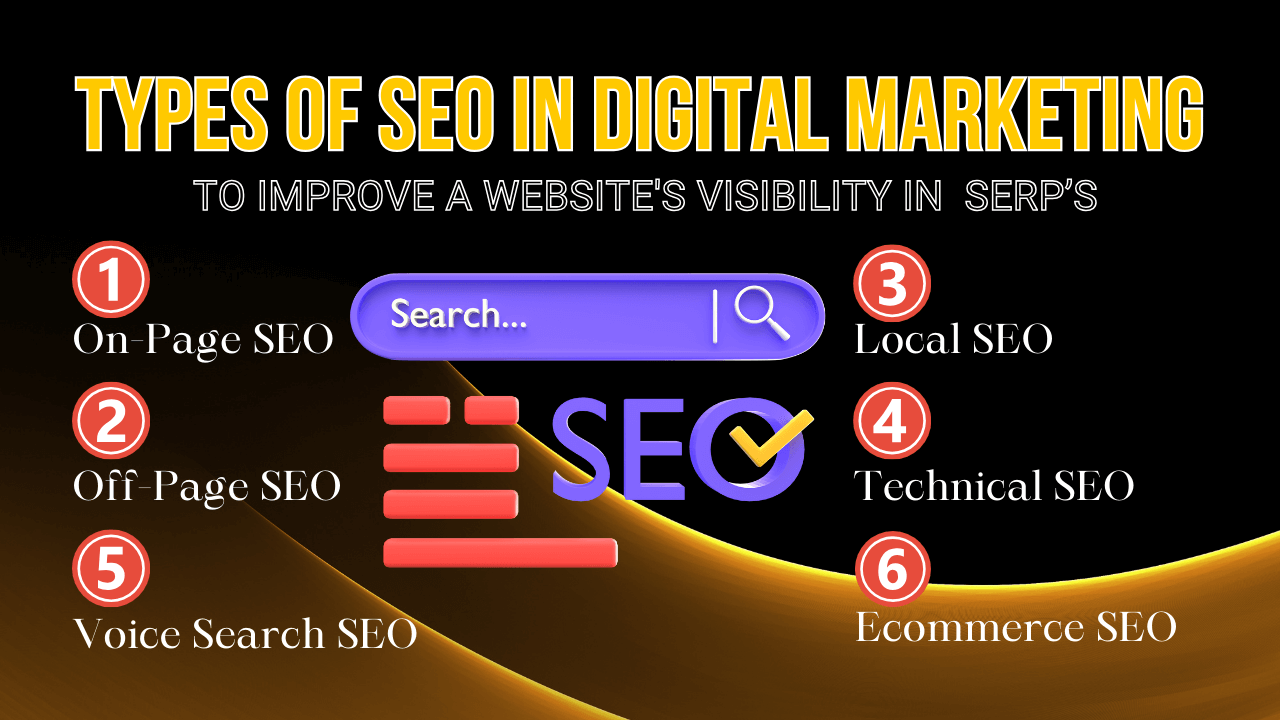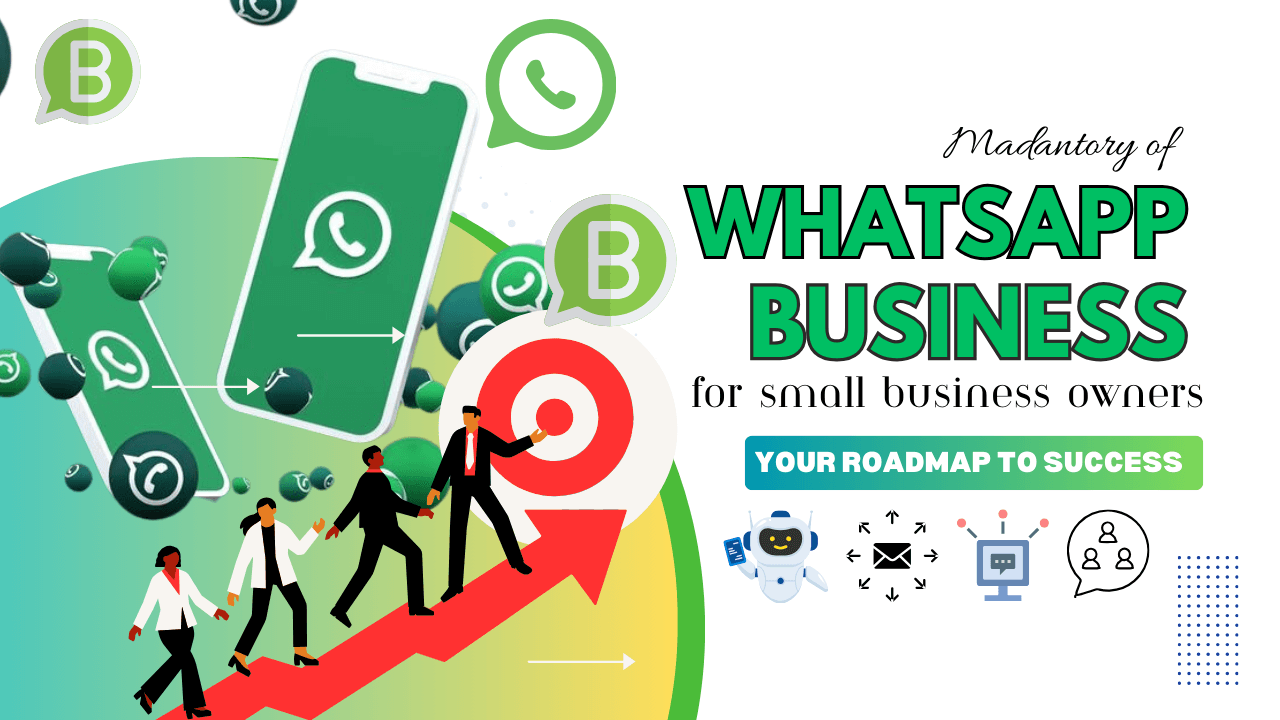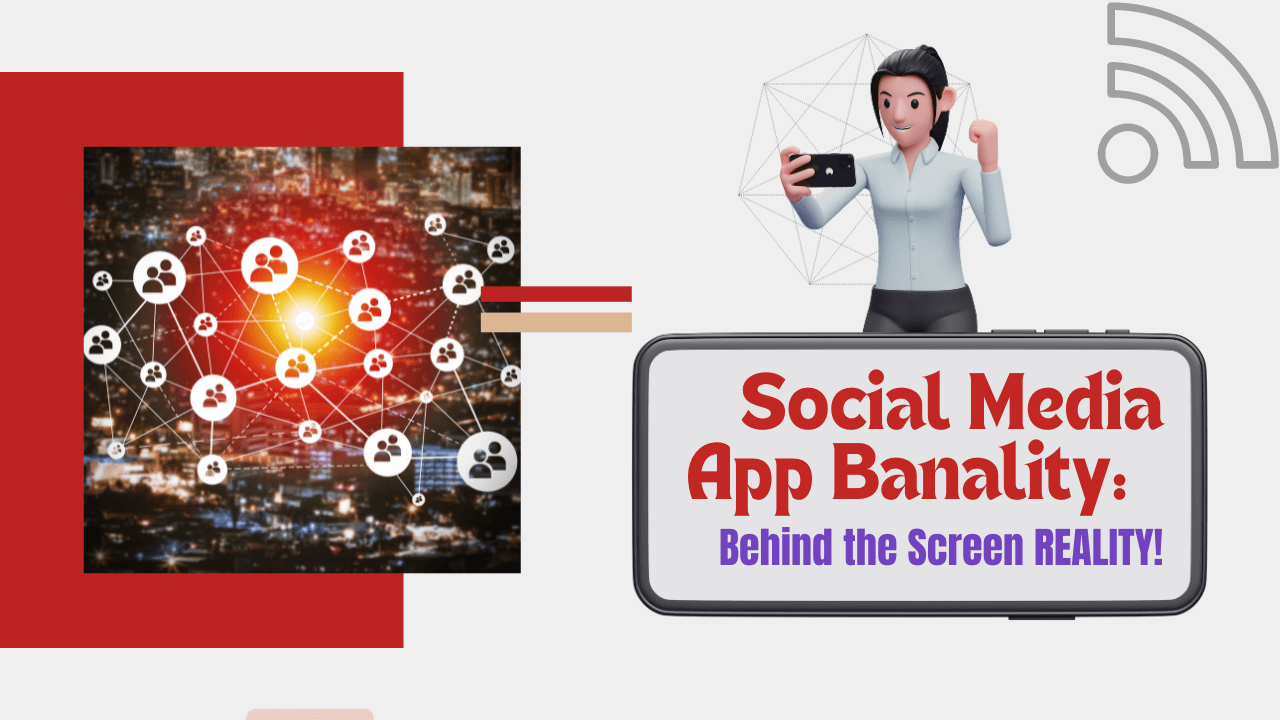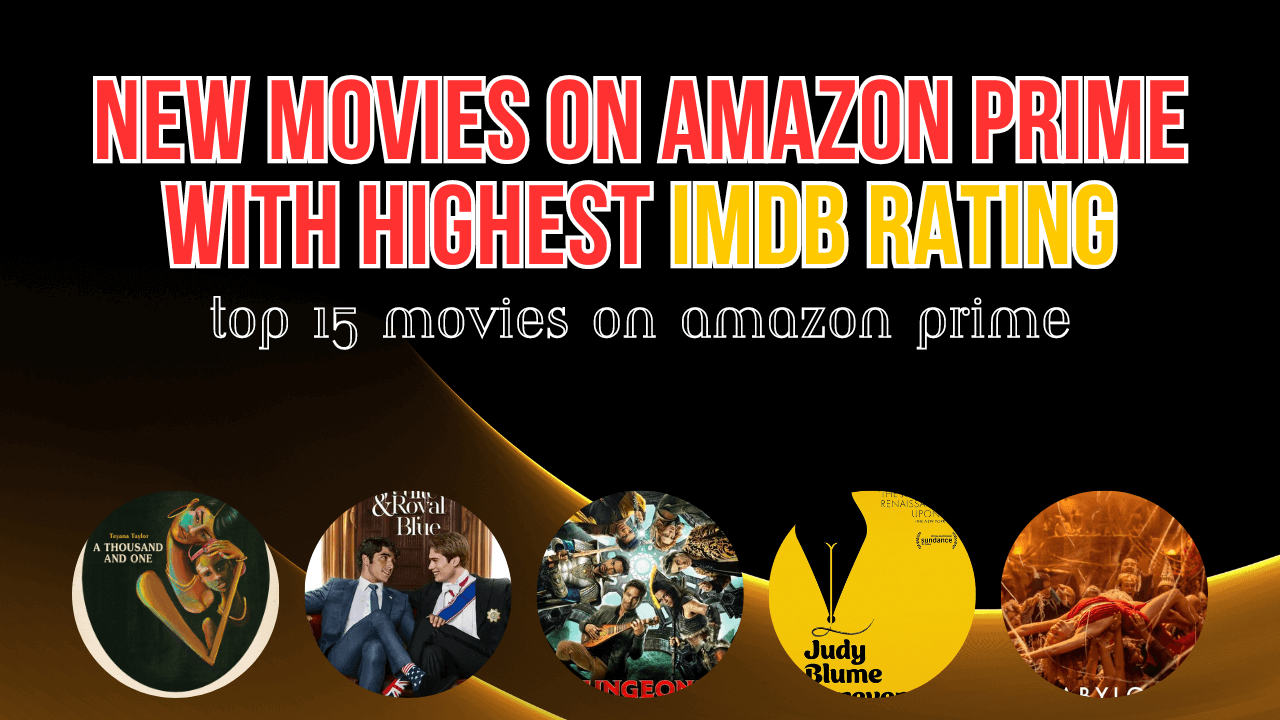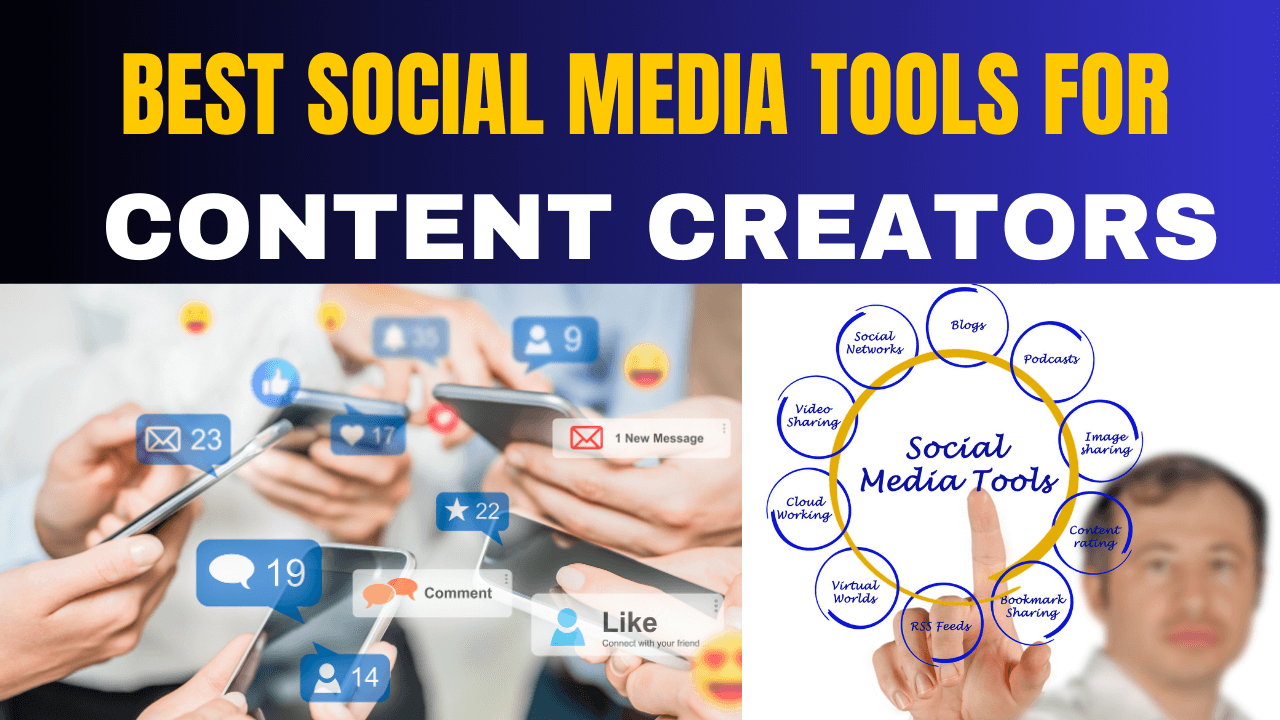Top 10 AI Marketing Apps & Benefits – Power of Artificial Intelligence
2 years agoLatest Content Marketing Trends: Stay Ahead in Future
2 years ago -

In today’s fast-paced digital world, where attention spans are shrinking and competition for online visibility is fierce, content marketing trends have emerged as a vital strategy for businesses to connect with their target audience. As the landscape continues to evolve, it’s essential to stay updated on the latest content marketing trends so that your content marketing efforts have a competitive advantage. In this article, we’ll dip into the top content marketing trends that help your businesses communicate and engage with their audience.
Table of Contents
- Introduction
- Visual Storytelling Takes Center Stage
- Voice Search Optimization
- User-Generated Content: Authentic Advocacy
- Ephemeral Content: FOMO-Driven Marketing
- Personalization at Scale
- Interactive Content
- AI & Chatbots: Improving Customer Experiences
- Building Trust and Expertise
- Ethical Branding
- Data-Driven Insights: Content Strategy Refinement
- Augmented Reality (AR) and Virtual Reality (VR)
- Omni-Channel Storytelling
- Content Distribution Tactics
- Measuring ROI: Beyond Vanity Metrics
- Conclusion
- Frequently Asked Questions
1. Introduction
Content marketing has evolved beyond the realm of mere blog posts and articles. It has become a multidimensional strategy that surrounds various forms of media to captivate and engage audiences in a significant way.
2. Video Dominance: Visual Storytelling Takes Center Stage
In the world of content marketing, there’s a powerful medium that has taken centre stage – video. With the rise of platforms like YouTube, TikTok, and social media, video content has become an essential tool for businesses to captivate their audience. But it’s not just about any video; it’s about leveraging visual storytelling to create a lasting impact.

Visual storytelling through video has transformed the content marketing landscape. Its ability to convey emotions, authenticity, and complex ideas while fostering a strong connection with the audience makes it an indispensable tool in any marketer’s arsenal. As technology continues to evolve, embracing video content will be crucial in delivering compelling messages that resonate and endure.
3. Voice Search Optimization: Conversational Content for SEO
In the rapidly evolving landscape of content marketing and search engine optimization (SEO), a new player has emerged that is changing the way we interact with the digital world – voice search. With the proliferation of voice-activated devices like smartphones, smart speakers, and virtual assistants, optimizing content for voice search has become paramount for businesses aiming to stay visible in search results.
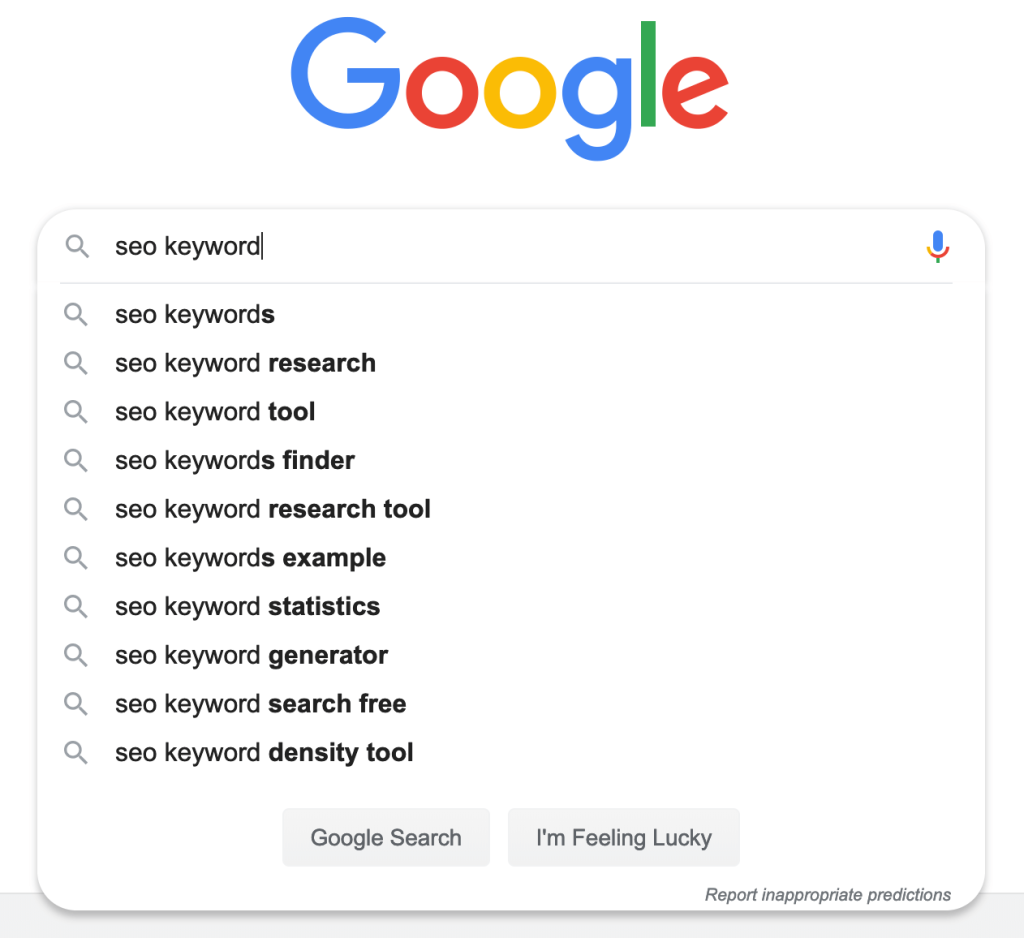
Voice search optimization is not just a passing trend; it’s a fundamental shift in how users interact with technology. As more devices integrate voice-activated capabilities, businesses must adapt their content strategies to ensure they remain visible and relevant in the world of voice search. By creating conversational, user-centric content that aligns with voice query patterns, brands can enhance their SEO efforts and connect with their audience in a more natural and meaningful way.
4. User-Generated Content: Leveraging Authentic Advocacy
Another powerful content marketing trend is user-generated content (UGC). This innovative strategy involves harnessing the creativity and enthusiasm of your audience to create authentic, compelling content that speaks volumes about your brand. Let’s dive into how businesses are effectively leveraging user-generated content to foster genuine advocacy and trust.
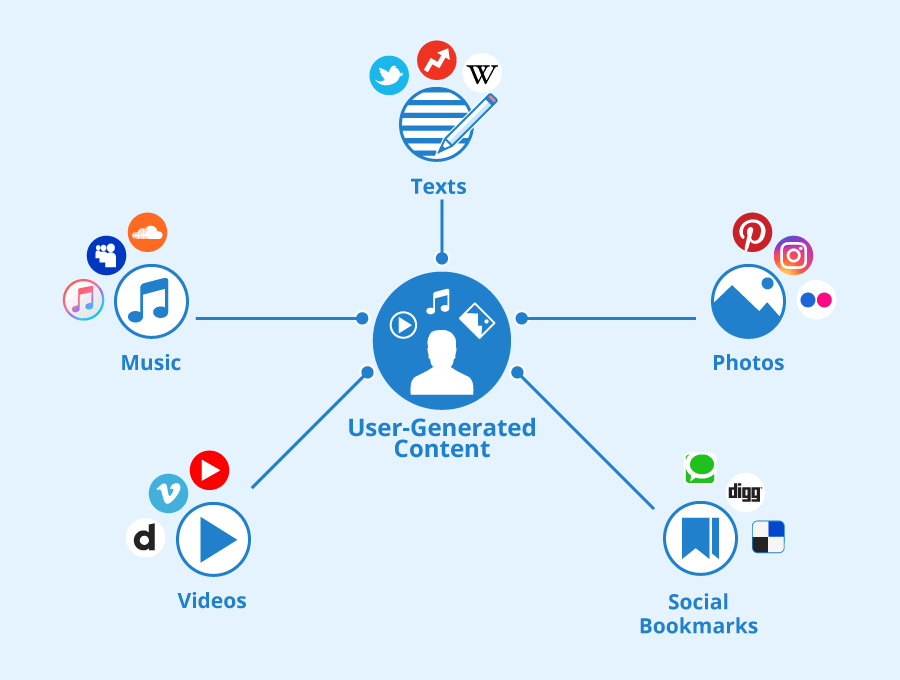
How to Encourage UGC for content marketing trend
- Contests and Challenges: Organize contests or challenges that prompt users to create content related to your brand. This can include photos, videos, or written testimonials.
- Social Media Engagement: Actively engage with your audience on social media platforms. Respond to their comments, share their content, and create branded hashtags to encourage sharing.
- Customer Stories: Share success stories from your customers. Highlight how they’ve benefited from your products or services and encourage others to share their stories as well.
- Reviews and Testimonials: Encourage customers to leave reviews and testimonials on your website or review platforms. Positive experiences shared by real users carry significant weight.
- Interactive Campaigns: Create interactive campaigns that encourage users to participate and share their experiences. Polls, quizzes, and challenges can all spark engagement.
User-generated content is a powerful tool that transforms your customers into brand advocates and storytellers. By embracing the authentic voice of your audience, you’re not just creating content; you’re creating connections. This genuine form of advocacy fosters trust enhances your brand’s credibility, and solidifies your place in the hearts of your customers.
5. FOMO Obsession Content Marketing Trends
FOMO obsession content has emerged as a trend that capitalizes on the Fear of Missing Out (FOMO). Ephemeral content refers to temporary, short-lived posts and stories that vanish after a brief period. This style of content has taken the digital landscape by storm, offering businesses a unique way to engage their audience and create a sense of urgency.

How to Build FOMO-Centric Campaigns fo
Crafting effective ephemeral content requires strategic planning. Create FOMO-centric campaigns by:
- Teasing Limited-Time Offers: Use ephemeral content to tease time-sensitive promotions, discounts, or product launches, encouraging users to take action before it’s too late.
- Event Coverage: Offer real-time coverage of events, conferences, or product unveilings through stories. This keeps remote audiences engaged and connected.
- Behind-the-Scenes Sneak Peeks: Share glimpses of behind-the-scenes activities, product creation processes, or employee interactions to humanize your brand.
- Exclusive Content: Offer exclusive content, such as insider tips, tutorials, or sneak peeks, exclusively through ephemeral content to reward engaged users.
- Interactive Polls and Q&A: Use polls, quizzes, and Q&A sessions to encourage direct interaction with your audience, making them feel like active participants in your brand’s journey.
FOMO content is not just a trend; it’s a strategic tool that taps into the psychology of urgency and fear of missing out. By leveraging the fleeting nature of this content, businesses can create engaging, authentic, and time-sensitive interactions with their audience. In a world where attention spans are short, ephemeral content offers a dynamic way to stand out and leave a lasting impression.
6. Personalization at Scale: Enabling One-to-One Connections
A revolutionary approach has emerged that blends the best of both worlds – personalization and scale. Personalization at scale allows businesses to create tailored experiences for each individual while reaching a broader audience.
Even in an automated process, the human touch remains critical. Content should be written with a conversational tone, reflecting the personal interactions customers expect.
The Human Touch
Personalization at scale is not just a marketing trend; it’s a strategy that bridges the gap between individualized experiences and mass communication. By harnessing data insights, automation, and a human touch, brands can nurture one-to-one connections that resonate with customers and drive engagement.
7. Interactive Content: Engaging Beyond Passive Consumption
Interactive content, such as polls, quizzes, and interactive infographics, encourages active participation. It keeps users engaged and allows them to be part of the content experience.
A dynamic shift is underway as brands embrace interactive content. Unlike traditional passive consumption, interactive content invites users to actively participate, making the experience engaging and memorable. Let’s delve into how this innovative approach is transforming the way brands connect with their audience.
Types of Interactive Content Marketing Trend
- Quizzes and Polls: Interactive quizzes and polls capture user attention while offering a fun and informative experience. They can help users discover personalized recommendations or insights.
- Calculators and Assessments: Providing users with calculators or self-assessment tools adds value by offering customized results based on their inputs.
- Interactive Infographics: Transforming static infographics into interactive experiences allows users to explore data and insights at their own pace.
- Interactive Videos: Videos with clickable elements, branching narratives, and decision points transform passive viewing into an immersive experience.
- Virtual Tours: For industries like real estate and travel, virtual tours provide users with a realistic and interactive preview of a space or location.
Interactive content is redefining the way brands engage with their audience. By inviting users to actively participate, brands create meaningful connections that go beyond passive consumption. Whether it’s quizzes, polls, interactive videos, or virtual tours, the key lies in providing valuable and engaging experiences that resonate with users.
8. AI and Chatbots: Improving Customer Experiences
Content marketing and customer engagement, artificial intelligence (AI) and chatbots have emerged as transformative tools. They are reshaping how brands interact with their audience. These technologies offer efficient and personalized solutions that enhance customer experiences and drive business growth. Let’s delve into how AI and chatbots are revolutionizing customer engagement.
The Rise of AI and Chatbots
AI-powered chatbots combine the prowess of machine learning and natural language processing to create virtual assistants capable of human-like interactions. These chatbots provide instant responses, streamline customer support, and offer personalized recommendations.
Instant Gratification
In today’s fast-paced world, customers expect quick responses. AI-powered chatbots provide instant gratification by answering queries around the clock. This availability ensures that customers receive timely assistance, fostering a positive perception of your brand.
Personalization at Scale
AI-enabled chatbots excel in personalizing interactions. By analyzing customer data and behavior, chatbots tailor responses and recommendations to each individual’s preferences and needs. This personalized touch enhances the overall customer experience.
Simplifying Customer Support
AI chatbots take the load off customer support teams by handling routine queries and tasks. This frees up human agents to tackle more complex issues, resulting in faster resolutions and happier customers.
Seamless Customer Journeys
AI chatbots create seamless customer journeys by guiding users through various stages of interaction. They can assist in product selection, offer relevant information, and even facilitate purchases without the need to switch to a different platform.
Enhanced Data Utilization
AI-driven chatbots gather valuable data during interactions. This data can be harnessed to understand customer pain points, preferences, and buying behaviours, enabling brands to refine their strategies.
24/7 Availability
Unlike human agents, AI chatbots are available round the clock. This accessibility ensures that customers can seek assistance or information whenever they need it, regardless of time zones.
Multi-Language Support
Language barriers are no longer an obstacle. AI chatbots equipped with language processing capabilities can provide support and information in multiple languages, expanding your global reach.
Building Brand Loyalty
Effective customer engagement fosters brand loyalty. When customers have positive experiences with AI-powered chatbots, they are more likely to return and recommend your brand to others.
The Human Element
While AI and chatbots enhance customer experiences, the human element remains crucial. Complex inquiries can be seamlessly transitioned from chatbots to human agents, ensuring a personalized touch when needed.
AI and chatbots are redefining customer engagement, offering efficient, personalized, and scalable solutions that cater to modern consumers’ expectations. By embracing these technologies, brands can create seamless, interactive, and impactful experiences that not only meet but exceed customer needs.
9. Long-Form Authority: Building Trust and Expertise
Long-form content marketing trends have emerged as a potent strategy for establishing authority, building trust, and showcasing expertise. This approach goes beyond brief blog posts, delving deep into topics to provide comprehensive value to readers. Let’s explore how long-form content transforms brands into trusted industry voices.
- Long-form content is a way of giving, not just promoting.
- Engaging long-form content keeps readers on your site longer.
- Brands can demonstrate real-world results, showcasing the impact of their products or services.
- Long-form content isn’t limited to text. Includes multimedia elements like images, infographics, videos, and interactive elements to enhance the learning experience.
Long-form content is inherently rich in keywords, which can improve SEO rankings. Search engines often prioritize comprehensive, authoritative pieces, rewarding them with higher visibility.
This content marketing trend is more than just a format; it’s a strategy for building trust, establishing authority, and showcasing expertise. By providing in-depth value, brands can create connections with readers, positioning themselves as authoritative sources in their respective industries.
10. Sustainability and Social Responsibility: Ethical Branding
In the dynamic world of content marketing, a transformative trend is reshaping the way brands connect with their audience – sustainability and social responsibility. Ethical branding goes beyond traditional marketing by focusing on environmental and social impact. Let’s delve into how brands are aligning their content strategies with values that resonate with consumers seeking a better, more conscious world.
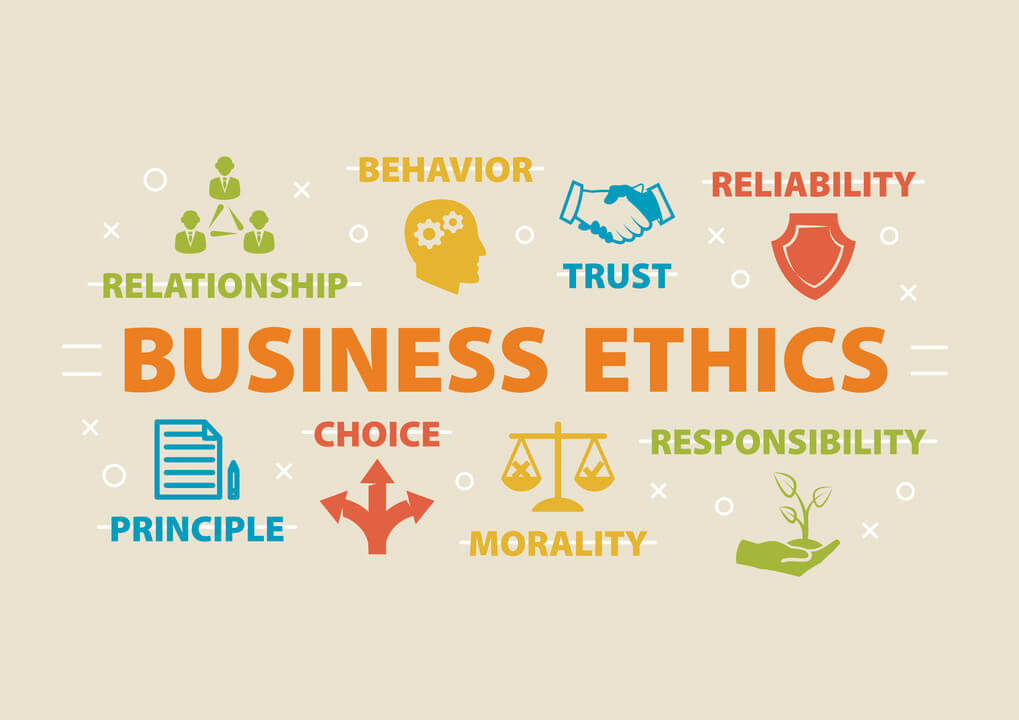
Consumers today are more conscious than ever about the impact their choices have on the planet and society. Ethical branding involves aligning a brand’s values and practices with sustainability, social responsibility, and ethical considerations.
- Ethical branding communicates a brand’s purpose beyond profit.
- Storytelling is central to ethical branding.
- Ethical branding demands transparency.
- Highlighting success stories, environmental improvements, and positive contributions to society.
- Ethical branding goes hand in hand with education.
- Brands can collaborate with non-profit organizations, industry leaders, and influencers to amplify their ethical message.
- Visual content, such as images and videos, can vividly portray a brand’s ethical initiatives.
Ethical branding is more than a trend; it’s a shift toward more responsible and conscious business practices. By integrating sustainability and social responsibility into their content strategies, brands can establish a deeper connection with consumers who value making a positive impact on the world.
11. Data-Driven Insights: Content Strategy Refinement
In the dynamic landscape of content marketing, data-driven insights have emerged as a critical tool for refining and optimizing content strategies. By harnessing the power of data, brands gain a valuable understanding of audience behaviours, preferences, and engagement patterns. Let’s delve into how data-driven insights are shaping the way brands create and refine their content strategies.
Data-driven insights provide a comprehensive view of how audiences interact with content. Metrics like click-through rates, time spent on a page, and bounce rates reveal what content captures attention and encourages engagement.
A/B testing involves creating two versions of a piece of content and comparing their performance. This data-driven approach reveals which elements resonate better with the audience, guiding content refinement.
Data-driven insights are invaluable for shaping content strategies that truly resonate with audiences. By understanding audience behaviours, preferences, and engagement patterns, brands can refine their approaches, create more impactful content, and achieve greater success in the ever-evolving landscape of content marketing.
12. Augmented Reality (AR) and Virtual Reality (VR) Content Marketing trends
A groundbreaking content marketing trend is reshaping the way brands engage their audience – augmented reality (AR) and virtual reality (VR). These technologies offer immersive experiences that transcend traditional content formats, allowing brands to create captivating and interactive journeys for their audience. Let’s dive into how AR and VR are transforming the content landscape.
Augmented Reality (AR)
AR overlays digital elements in the real world through devices like smartphones or AR glasses. Brands can use AR to enhance physical spaces, offer interactive product demos, and provide real-time information in a visual format.
Virtual Reality (VR)
VR offers complete immersion in a digital environment. Users don VR headsets to experience simulated worlds. Brands can create VR experiences for product demonstrations, virtual tours, training simulations, and more.
AR and VR are reshaping the content marketing landscape by offering immersive experiences that captivate, engage, and resonate with audiences on a deeper level. By integrating these technologies into their strategies, brands can create memorable and interactive journeys that leave a lasting impact.
13. Omni-Channel Storytelling: Seamless Brand Narratives
Tell a cohesive brand story across multiple channels. Consistency in messaging and tone creates a stronger brand identity. While likes, shares and page views offer insight into engagement, they often fall short of demonstrating the actual value content brings to a business. Let’s delve into how brands are moving beyond vanity metrics to measure ROI effectively and accurately.
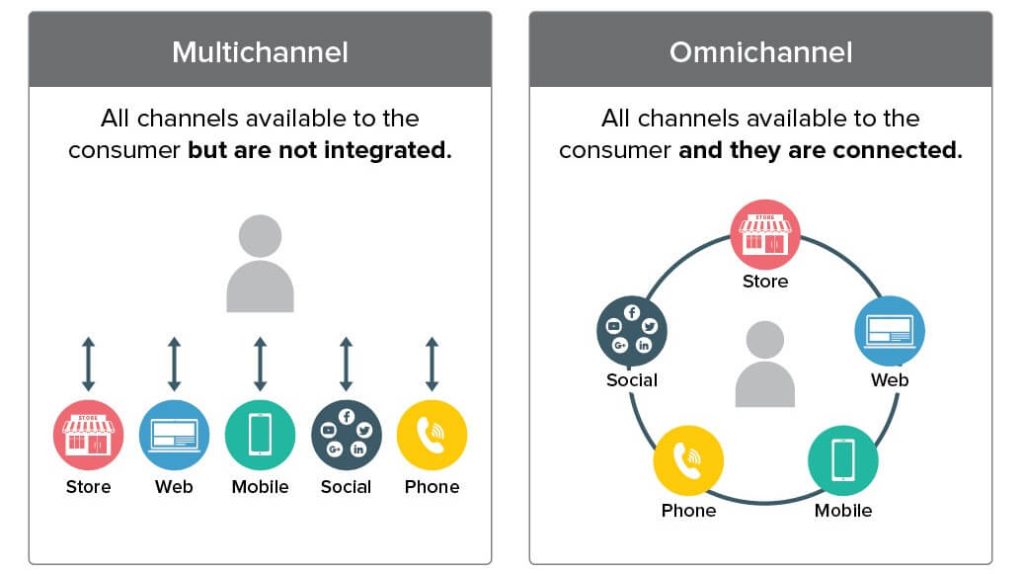
Moving beyond vanity metrics and measuring ROI requires a shift in perspective. By aligning content goals with business outcomes, tracking conversions, and understanding costs, brands can accurately quantify the value content brings. This data-driven approach ensures that content strategies are not just engaging but also impactful to the bottom line.
14. Content Distribution Tactics: Reaching the Right Channels
Content marketing trends crafting compelling content is only half the battle. Equally important is ensuring that content reaches the right audience through effective distribution strategies. Let’s explore how brands are employing smart content distribution tactics to maximize visibility, engagement, and impact.
Targeted Distribution
One size doesn’t fit all. Targeted distribution involves tailoring content to specific audience segments and distributing it on platforms they frequent. This approach ensures that content resonates with the right people.
Social Media Amplification
Social media platforms offer a massive audience base. Brands leverage social media channels to share content, engage with users, and encourage sharing, enhancing content reach and engagement.
Influencer Collaborations
Partnering with influencers in your industry can amplify content distribution. Influencers bring their followers’ trust and engagement, giving your content a broader reach.
Email Marketing
Email remains a powerful content marketing trends distribution channel. Brands send personalized, relevant content directly to subscribers’ inboxes, fostering a deeper connection.
Content Syndication
Content syndication involves republishing your content on other platforms, and reaching new audiences while retaining backlinks to your original content for SEO benefits.
Native Advertising
Native ads blend seamlessly with the platform they appear on. Brands use native advertising to deliver valuable content to users without interrupting their browsing experience.
Guest Blogging
Contributing guest posts to reputable websites in your industry expands your reach and establishes your brand as an authority.
Podcasts and Webinars
Using audio and video content through podcasts and webinars engages audiences on-the-go and allows for in-depth discussions.
SEO Optimization
Ensuring your content is SEO optimized helps it rank higher in search engine results, increasing organic visibility.
Paid Advertising
Paid advertising on platforms like Google Ads or social media allows brands to target specific demographics and reach potential customers directly.
Content Recirculation
Recirculate evergreen content periodically to reintroduce it to new audiences or remind existing followers of its value.
Analytics-Driven Refinement
Regularly analyze distribution performance using analytics tools. Adjust your distribution strategy based on insights to optimize results.
Crafting remarkable content is just the beginning; distributing it effectively is the key to success. By leveraging a mix of targeted distribution channels, brands can ensure their content reaches the right audience, maximizes engagement, and ultimately achieves their marketing goals.
15. Measuring ROI: Beyond Vanity Metrics
The focus is shifting from vanity metrics to measuring tangible return on investment (ROI) by content marketing trends. While likes, shares and page views offer insight into engagement, they often fall short of demonstrating the actual value content brings to a business. Let’s delve into how brands are moving beyond vanity metrics to measure ROI effectively and accurately.
To measure ROI, brands must first define tangible goals tied to business outcomes. Whether it’s lead generation, sales conversion, brand awareness, or customer retention, clear objectives provide a foundation for meaningful measurement.
Moving beyond vanity metrics and measuring ROI requires a shift in perspective. By aligning content marketing trends plans with business outcomes, tracking conversions, and understanding costs, brands can accurately quantify the value content brings. This data-driven approach ensures that content strategies are not just engaging but also impactful to the bottom line.
16. Conclusion
In the rapidly evolving landscape of content marketing trends, staying ahead is essential. By embracing these trends, you can create compelling content that resonates with your audience, drives engagement, and ultimately boosts your brand’s success.
17. Frequently Asked Questions (FAQs) of content marketing trends
Q1: How can I incorporate interactive content into my strategy?
Q2: What role does AI play in content creation?
Q3: Why is personalization crucial in modern content marketing?
Q4: What are some effective ways to measure content marketing ROI?
Q5: Can you provide examples of successful omni-channel storytelling?
Similar articles:
- Step-by-Step Guide: 12 Steps to Create a Marketing Plan for Business Growth
- How to Optimize for Zero-Click Searches? Is It Bad for SEO?
- Metaverse Marketing: Social Media Marketing in the Metaverse
- What is On Page Optimization? Keyword, URL, Meta Tags, ALT Tags & MORE!
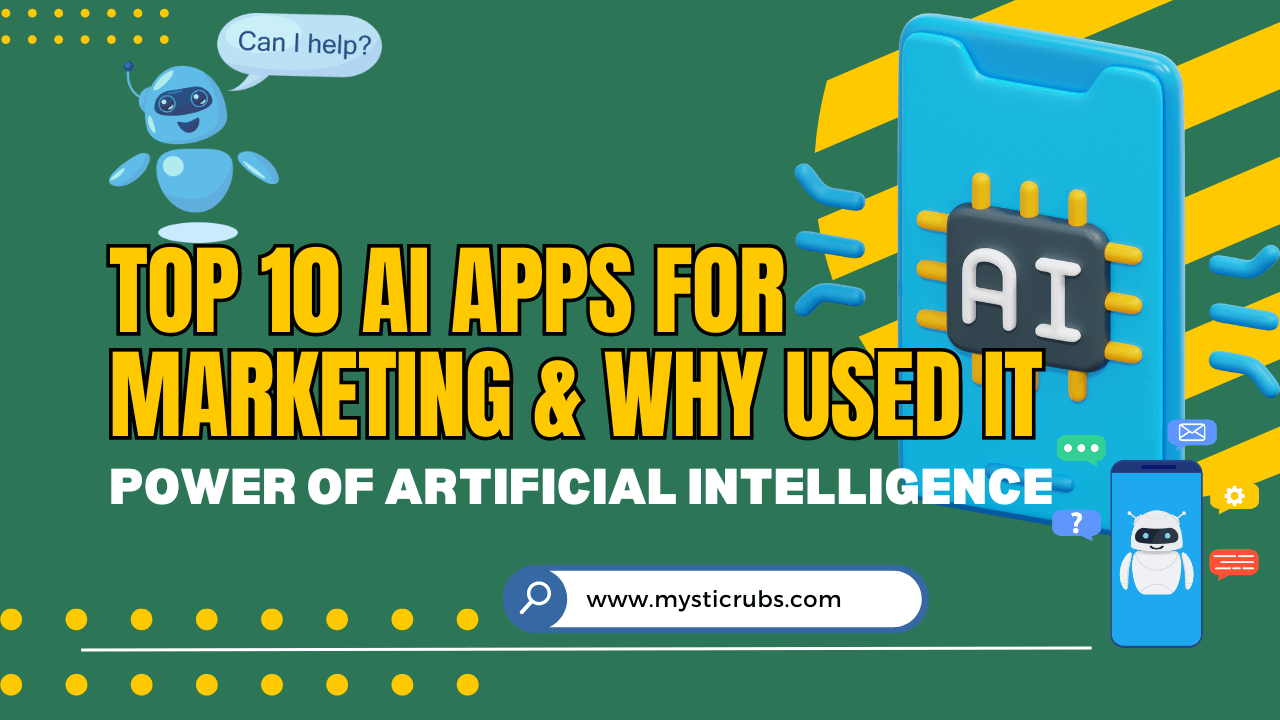
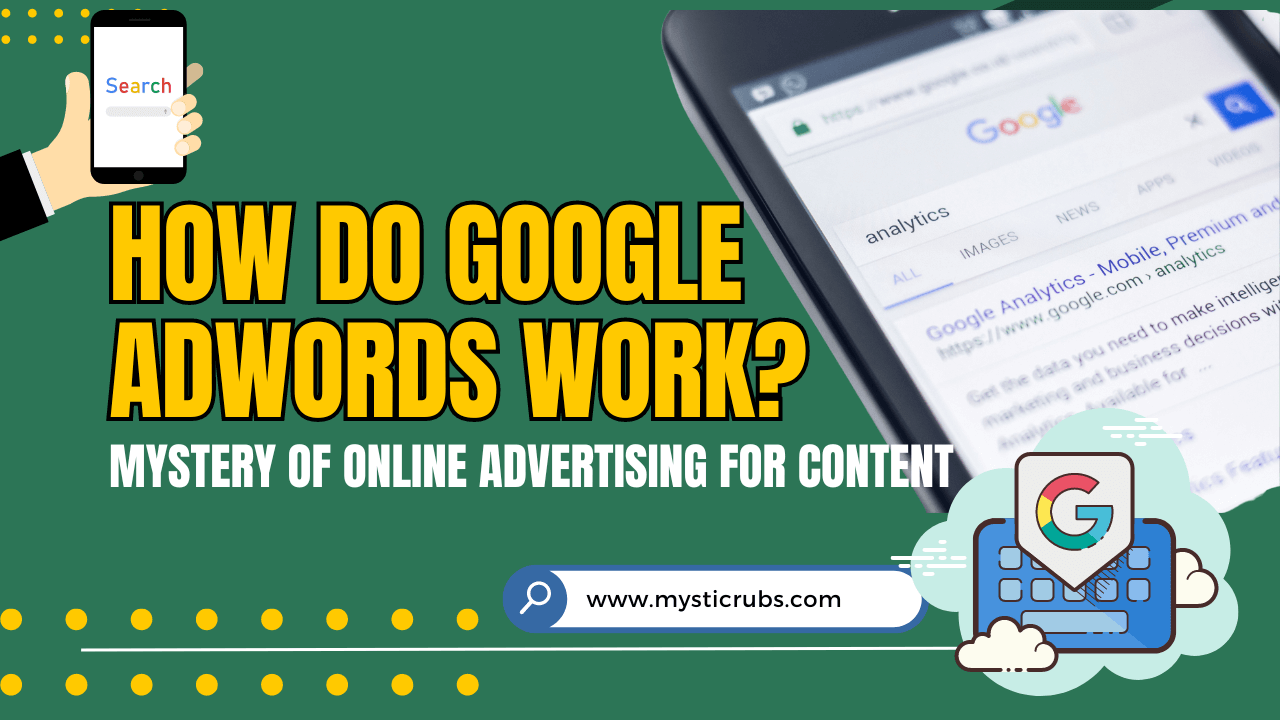

![[2025 Updated] Top 10 Digital Marketing Agencies in Nepal Ranked!](https://mysticrubs.com/wp-content/uploads/2022/05/top-10-digital-marketing-company-in-nepal.png)
